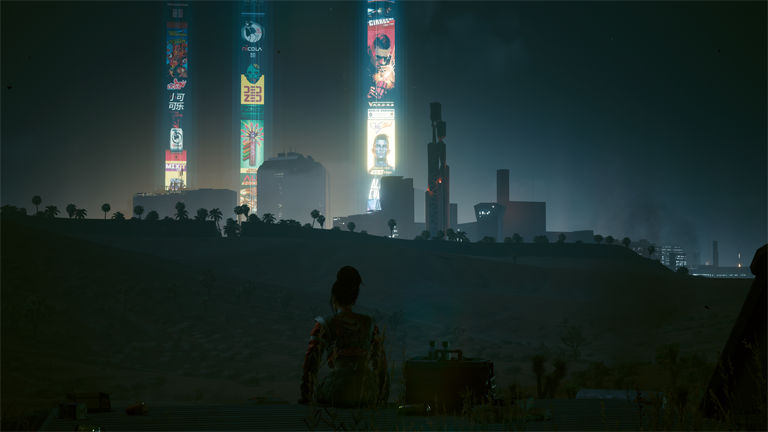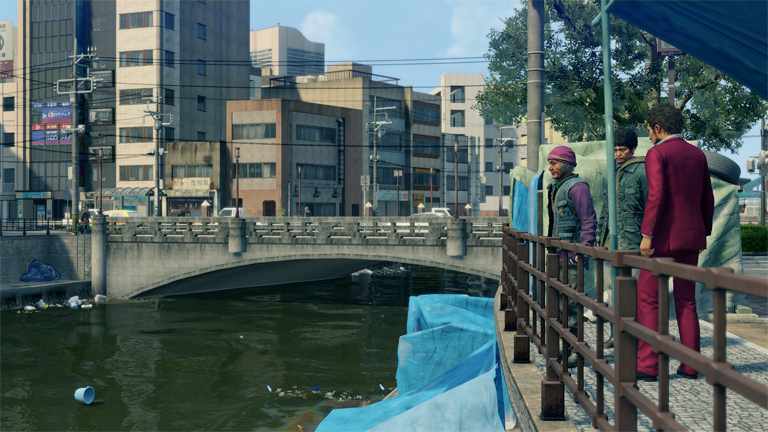How's this for a recurring nightmare?
You're running down narrow, winding alleys with pursuants hot on your heels. The "why" is unimportant: maybe you were spotted by a Nazi patrol while out on a night's cheeky sabotage; maybe Forelli goons are out for your blood; maybe you simply overestimated and Tyger Claws you tangled with turned out much tougher than you thought. Doesn't matter... Point is, there you are — running.
As you run, you keep passing all these doors – each a point of egress to concealment, safety, or – at the very least – an extra variable in the equation people after you gotta solve to catch up... Except none of the doors will open. Each of 'em certainly looks like it could, but when you reach for it, nothing happens. It's like you're that kid on YouTube – fingers outstretched for a 3D element drawn on a flat surface. There's nothing there... And then it hits you: this is no nightmare.
It's just a limitation game development has not been able to surpass.
By now, I don't think anyone will argue game devs don't have city-building down to a fine art. Between GTA's Vice City, the Paris of Saboteur, Sleeping Dogs' Hong Kong, Saints Row's Stillwater, Yakuza's Yokohama or Kamurocho or, indeed, CP2077's Night City, it is clear studios are quite adept at constructing densely-populated urban areas that feel as if they were actual functioning metropolises... But the illusion is only skin deep. Step outside of a scripted area, put one foot down where a dev didn't intend you to be, and the bubble, disappointingly, bursts: doors remain locked, windows turn out to be picturesque, impenetrable barriers, and the promise of endless exploration turns out to be a clever facade slapped on the same level design as blocky, old Wolfenstein 3D.

I find it telling that, when CP2077 first came out, a recurring complaint about Night City's countless locked doors was that the game had shipped with "cut content." I mean, anyone who actually thought that was being wacky to no end, but – at the same time – it was kind of valid. Because (not to cheapen their accomplishment) if all CDPR managed to build was a nicer looking facade that was still largely inaccessible, then CP was not a genuine step forward: merely a refinement of the plateau hit by every other developer to date (of which there've been quite a few).
But, as in every instance of digital, urban development before it, CDPR was up against the same old hindrances and limitations: time, money, (wo)manpower and – most importantly – technology. The first three are kind of a packaged deal.
Time is self-explanatory. Assuming, say, eight hours for an average, working interior (what with building asset models, level design and scripting), every new space pushes back completion time by a single working day. And as deadlines exist, only so many interior spaces you can actually enter and explore can be budgeted into the production.
Money goes hand in hand with time: every hour worked is billable, after all, so every new space developed eats into your budget to the tune of number of people times their hourly pay.
And (wo)manpower rounds out the trifecta. If each space requires three people for a full working day to be occupied, it doesn't take long before you run out of people who can handle extra work.
Of the three (as in most cases), money's the real bottom line. Given an unlimited budget, you could always hire extra people or keep pushing back deadlines until you had your actual fully-interactive city sussed... But as games are products meant to turn a profit, there's always a ceiling built-in to how many resources you can throw at stages of development, which neatly brings us to the real limiting factor of today's article. Namely – technology.
Know why, in the 13 years since the first Leaf started zipping around town, the electric vehicle market hasn't had any major breakthroughs? Why Tesla's battery-management algorithm was lauded to such a degree? It's because, at their core, every single EV – from your Lucids to your Rivians and everything in between – uses the same, venerable Lithium ion battery for storage: tech that's been around since 1987! Oh, there've been refinements and manufacturers are constantly shaving weight and making minor improvements, but – in terms of actual storage capacity – nobody's come up with a better medium than Lithium ion in 36 years.
Game development is the same, in that respect.
While there have been countless performance upgrades to games – better visuals, sound, animation and effects – the workload architecture (and thus development process) has remained largely unchanged. Broadly speaking, the more complex your environment, the more people you need to put it together. And since we have just determined that time, money and (wo)manpower are interrelated and largely fixed, that leaves technology as the only means of getting over this particular development hurdle.

The means to realize a fully interactive city already exist (albeit in fledgling form). Machine-learning algorithms (call 'em "AI" and feel the wrath of my slipper!); such as Transformers, GANs, Random Forest or MDP are already in use by services like ChatGPT and Stable Diffusion to generate their own responses from large pools of provided data. The only hitch is that 1) such systems are so incredibly resource-intensive incorporating them into a game would mean 99% of the public couldn't afford the rig to play it; and 2) the responses generated by said services do not include validation — meaning the system generates output from provided data and parameters to the best of its ability, but doesn't really "care" whether what it generated is actually any good.
Overcoming the first hurdle would be relatively easy: as the algorithm would only be needed during the development (or placement) of static assets, it wouldn't actually need to be part of the finished game. Storage would be an issue, obviously (limited as it is, a CP2077 installation already runs to the tune of 77 Gb; increasing the amount of places you can visit even by a factor of 10 wouldn't do much for Keeping Size Manageable); so, probably, a parallel improvement of database and/or compression technology would also be needed.
The validity issue, I'm less sure about. I suppose the algorithm's data pool could be more strictly managed, so that the data it makes its decisions based on was as specific as possible. And I guess more stringent parameters (or less leeway in decision-making?) could, maybe, ensure more accurate results, but I simply don't know enough about machine learning to contribute much beyond vague speculation (unlike the rest of this article, which is composed entirely of informed speculation).
To an admittedly tiny degree, we've already seen some of this newfangled approach in action in Cyberpunk 2077. I read somewhere that in order to populate Night City with random assets (your crates in alleys, vending machines or simply garbage), CDPR resorted to a procedural programming solution (i.e. having an algorithm distribute assets throughout the City, rather than having devs place each trash bag by hand using the Patented Bethesda Method). Expanded and refined, I think this is the only way forward if we are to, one day, see an actual, living city rather than yet another appealing mirage.
Unfortunately, given the length of time between breakthroughs in my EV parallel and the sheer programming complexity of the task, this likely means those of you who do live to see the dream of a fully interactive city realized are in for a decadeslong wait (while the rest of us won't even be around by the time it finally happens). But I believe that, later or even further down the road, human ingenuity will prevail in the end.
Then, maybe, a character of yours finally can open a random door in that alley they're running through, duck inside and – true to every movie chase cliché ever – shush its outraged occupant with a finger to their lips, while your pursuit passes by unaware that the door they just ran past was one they could actually open...
Pig Recommends:
- -feel like a jaunt around a town other than your own? Pandemic's Mercenaries 2: World in Flames and The Saboteur offer extensive trips to war-torn Venezuela and occupied Paris; Illusion Softwork's Mafia beautifully recreates the splendor (and squalor) of 1930's interwar America; Ryu Ga Gotoku does a splendid job showcasing Yokohama, Tokyo and Osaka in Yakuza: Like a Dragon; Eidos-Montréal's future Prague in Deus Ex: Mankind Divided is full of secret nooks and crannies I'm still discovering, years after my initial playthrough; and – Night City? oh, that's where I live now; tell me when you're visiting – we'll hang;
